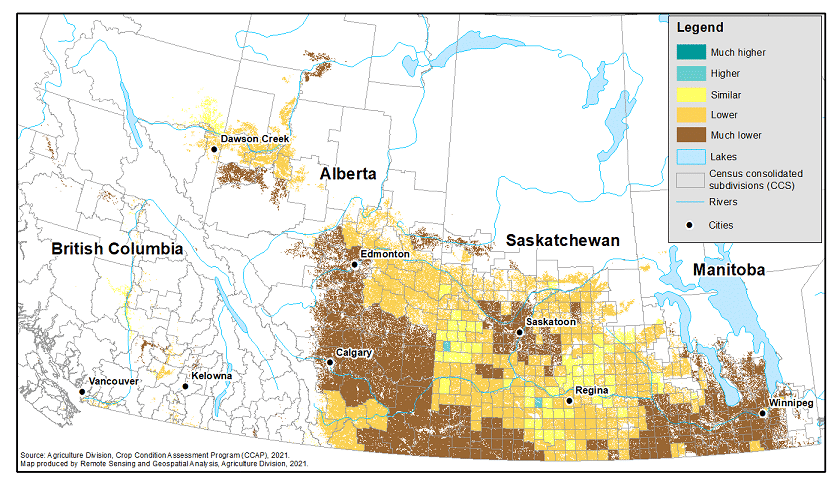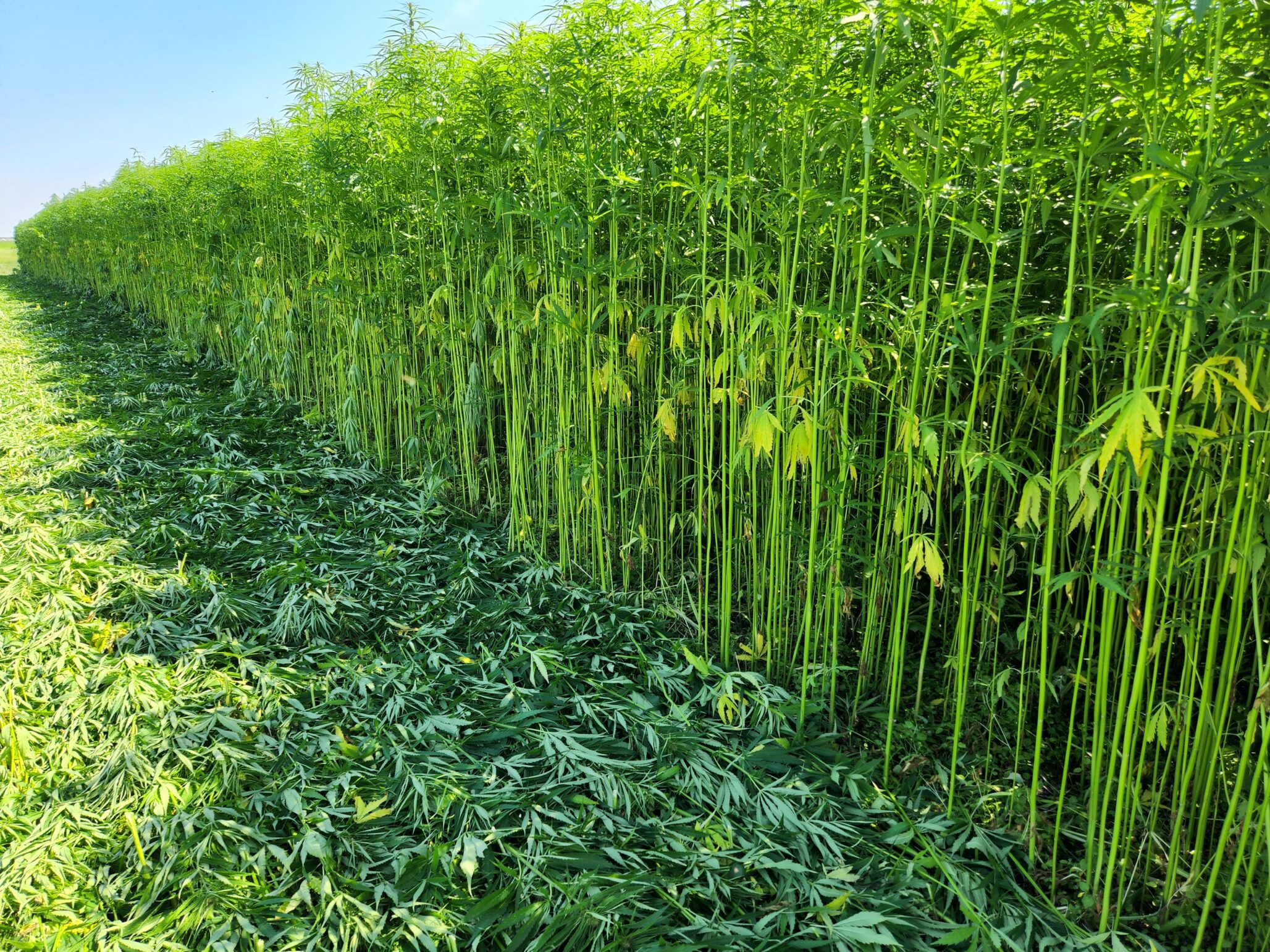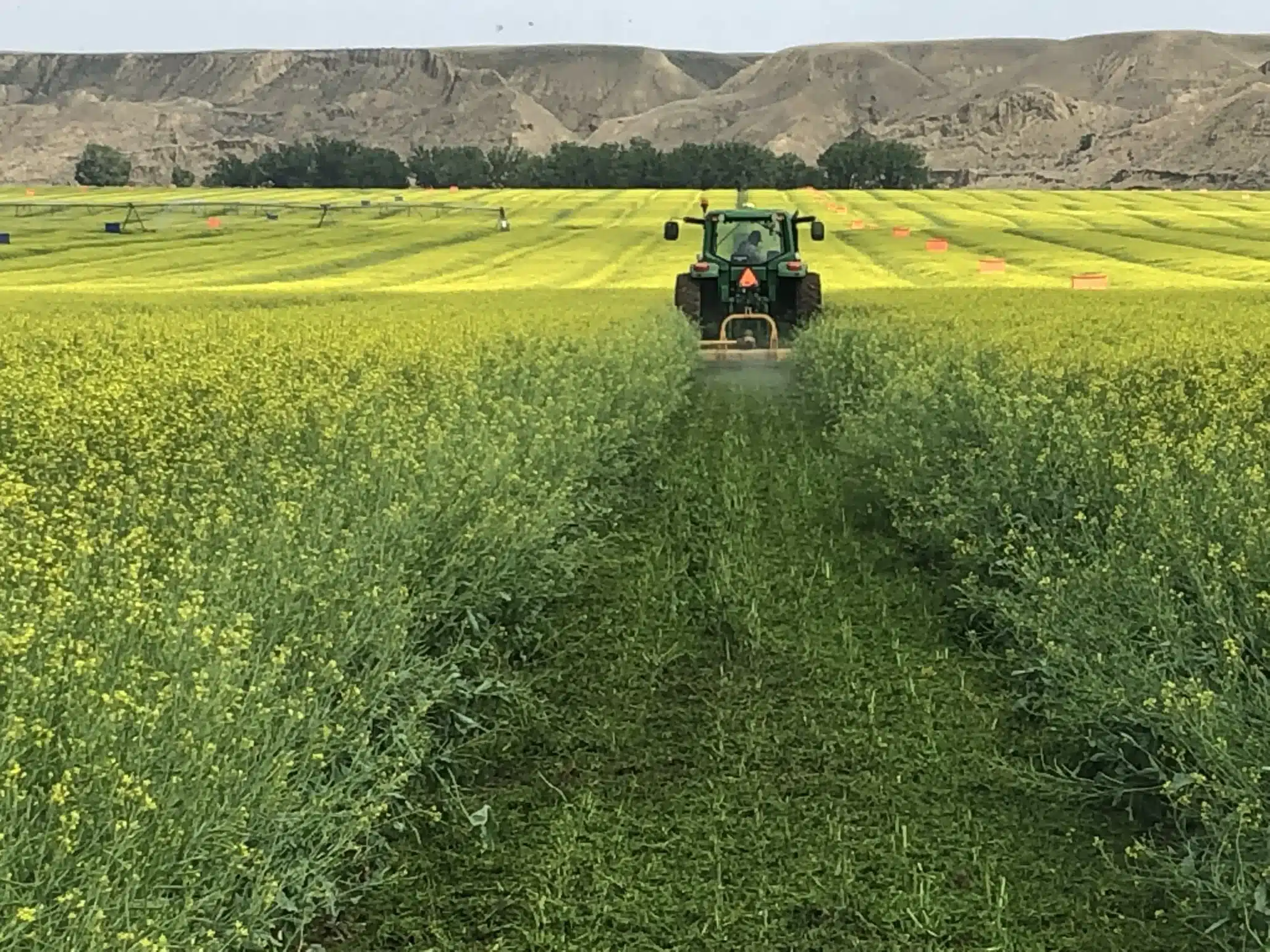The drought conditions in southern Alberta are equivalent to or lower than the 2002, Statistics Canada says in a post on July 29.
Crop reports from across Western Canada have described the effects of record-high temperatures and lack of rainfall that have stressed crops. These reports have noted some crops have matured faster than normal, or stagnated in their development.
“The longer these conditions persist, the greater the negative impact will be on crop and hay yields, grain quality and ultimately, farm cash receipts,” Statistics Canada says.
In mid-July, the Alberta government reported 36.6 per cent of the crops were in good to excellent condition compared with the five-year average of 74.1 per cent.
“Despite the heat and lack of rain in parts of the country, the situation could still improve if cooler temperatures and rain come in time to mitigate the decline in yields and quality,” Statistics Canada says.
Statistics Canada monitors crop conditions on a weekly basis using coarse resolution satellite imagery as part of the Crop Condition Assessment Program funding by Agriculture and Agri-Food Canada. It uses Normalized Difference Vegetation Index (NDVI) to monitor changing crop and pasture conditions.
Based on the NDVI, for the week of July 19 to 25, 2021, growing conditions are lower to much lower for most of the Prairies and British Columbia compared with normal, the post says. Since April 1, most of the Prairies received from 40 to 85 per cent of average precipitation since the beginning of the growing season, while the interior of B.C. has received less than 40 per cent of average precipitation.
“The concern expressed by many farm operators is that the current drought conditions have hit at the worst time of crop development,” Statistics Canada says in the post.
Statistics Canada will release estimates on the production of principal field crops on August 30. The report will provide a more comprehensive overview of the impact of the drought on Canadian crops in 2021.













